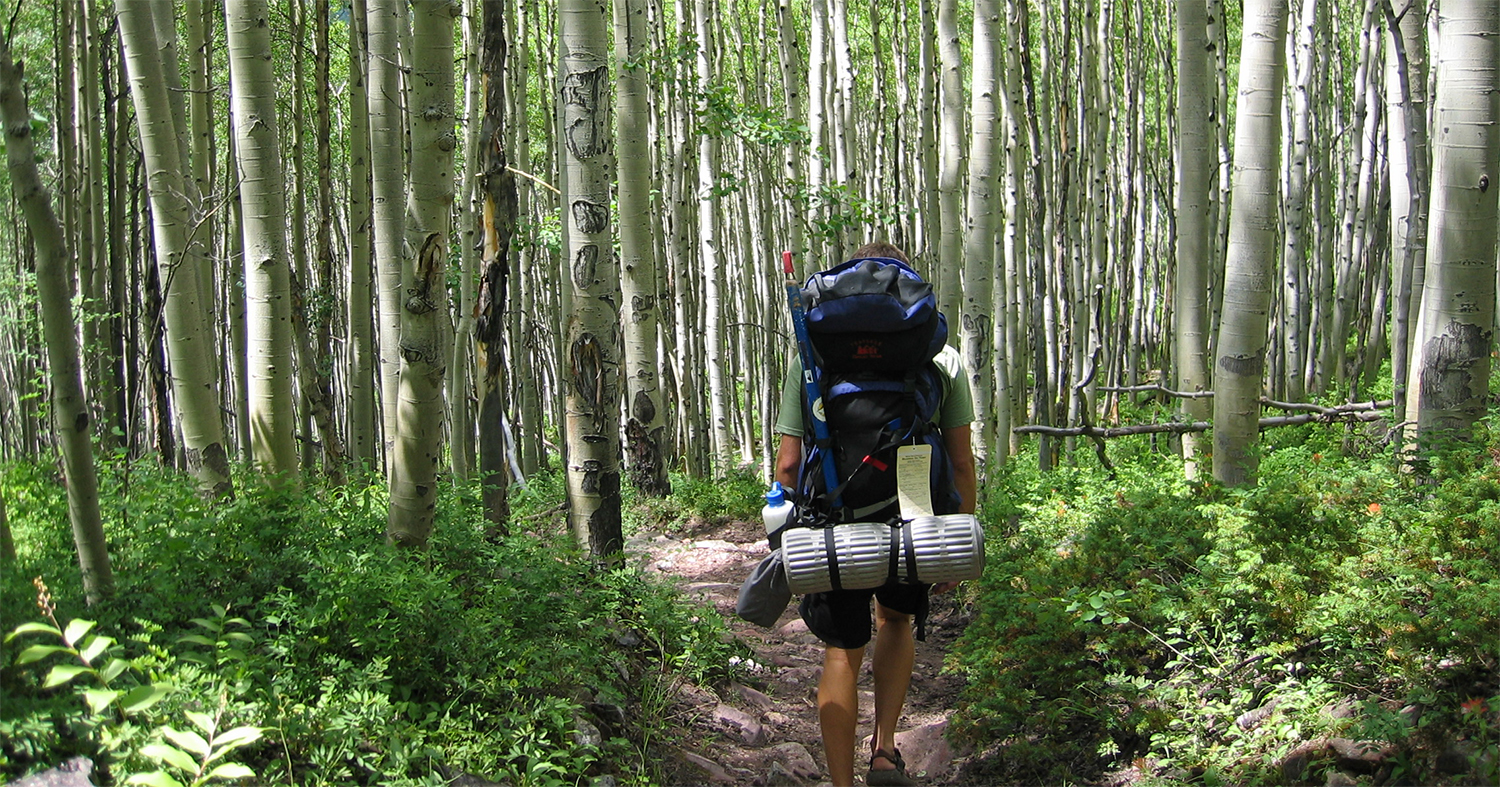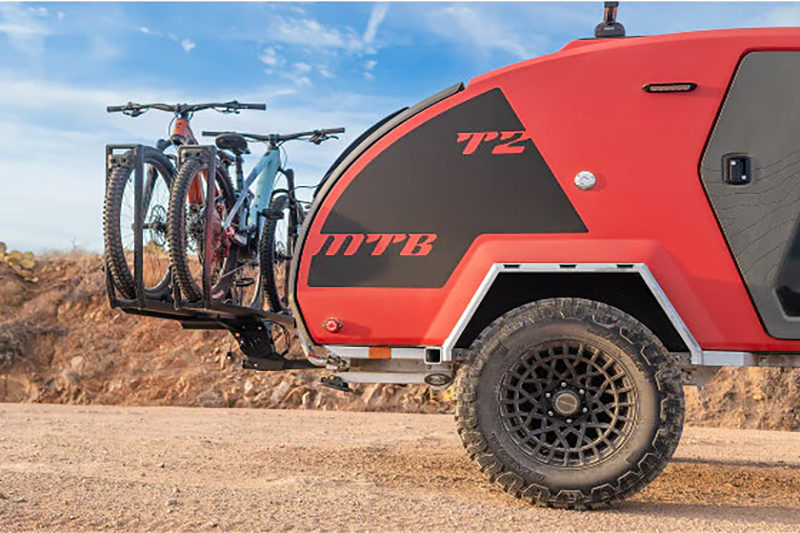Hiking Tips
Our 4×4 vehicles take us to places in the backcountry where others cannot go. Where the road ends, the real wilderness starts. We’ve all driven by trailheads and wondered where they might lead, and wondered what exciting destinations are waiting for us at the end of that trail. At one time or another, we’ve all been inspired by the sight of a trailhead or path winding through the backcountry. So now it’s time to get out of our 4×4, hit the trail, and find out where those trails go. Hiking can be a truly rewarding experience and a great adventure. Whether you go for an hour or for a week, there is scenery, solitude, and wildlife that can only be discovered under our own power. To enjoy the outdoors on foot, let’s consider some things that will make your day (or week) on the trail enjoyable, successful, and provide you with a lifetime of good memories.
WHAT KIND OF HIKE DO YOU WANT TO DO?
Depending on the length of the trail, you can spend an hour or even weeks on a hike. A day hike is exactly that….lasting up to one day with no overnight camping. It is a wonderful way to experience the backcountry because you travel light and can do a different hike or destination each day. Day hiking is also relatively inexpensive because it requires minimal equipment.
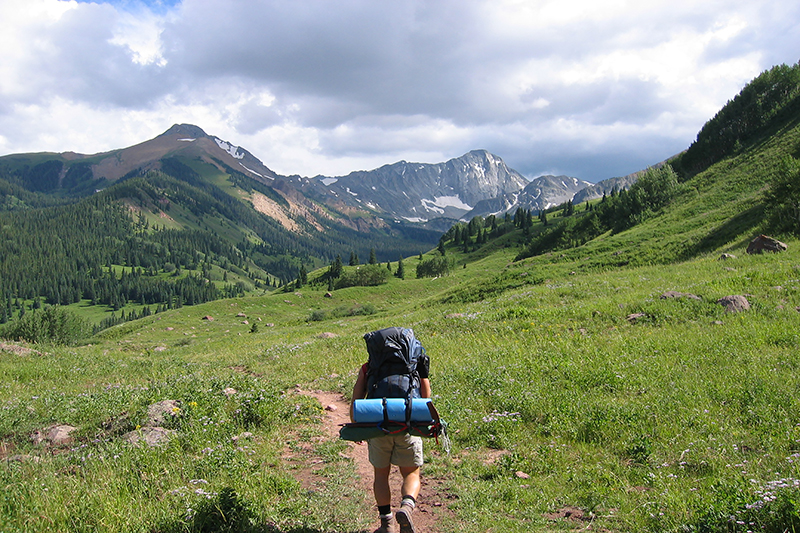
En route to Capitol Peak through the Maroon Bells-Snowmass Wilderness – Photo by Ray Schindler
Backpacking takes day hiking to the next level. Any time you camp overnight during a hike, it is considered backpacking. Whether a weekend trip or weeks on the trail, backpacking opens up the hiker to longer distances and greater adventure. Backpacking requires additional equipment, more food, and greater effort in order to complete the hike. However, the rewards for backpacking can be tremendous. Backpacking takes the hiker into the true backcountry, with scenery, wildlife, and solitude that day hiking sometimes cannot offer. Another option is to backpack to a long distance basecamp, then day hike out from there. Imagine the possibilities!
WHERE ARE YOU GOING ON YOUR HIKE?
No matter where you live there are places to hike, especially day hiking. If you live in an urban area, you may have to travel a bit to find a trail for a day hike or multi-day backpacking trip. Guidebooks for your area or state are a great place to start. You can find guidebooks online or at your local outdoors shop. State and government public lands are a great place to hike and include national forests, national parks, Bureau of Land Management areas, and state parks. Each of these offers thousands of miles of trails throughout the country. Check with all local and government areas for hiking regulations or permit requirements. Once you decide on a trail, study the map or guidebook and become familiar with the route.
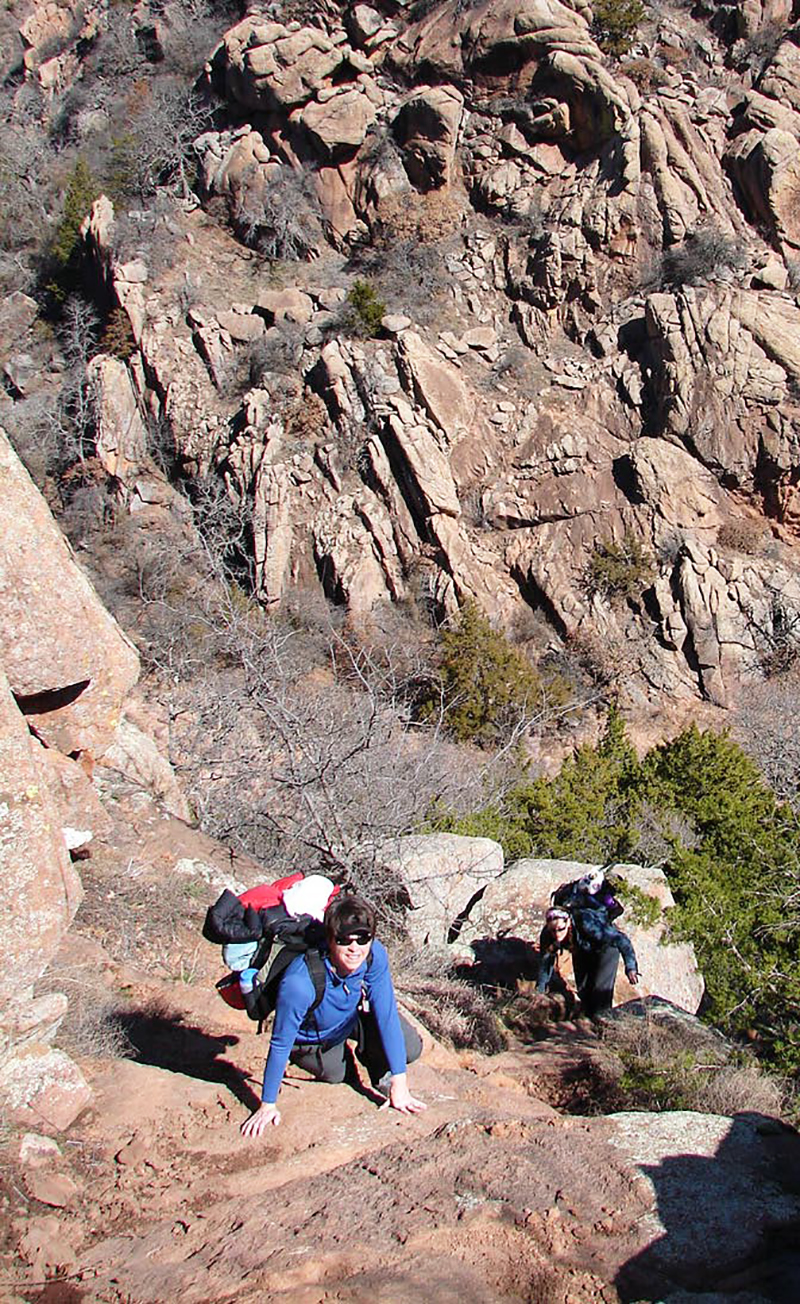
Hiking in the Wichitas of Oklahoma – Photo by Alan Ellis
HOW LONG DO YOU WANT TO SPEND ON THE TRAIL?
A beginner should probably start with doing a few short-distance day hikes. Five miles or less is a good goal for your first day hike, then gradually increase your distance until your body becomes used to hiking. Trying to tackle a 20-miler on your first time out is a great way to turn you off from hiking forever.
Once you’re comfortable with day hiking, try doing a one or two-night backpacking trip over a weekend, again limiting your distance to one that will guarantee success. With experience, you can shoot for that 100-mile, weeklong trip you’ve been dreaming of.
WHAT EQUIPMENT SHOULD I TAKE?
The equipment for a day hike is pretty simple and should include a small daypack plus the essentials, with essentials including the following: food, water, map and compass, guidebook, rain gear, light source (flashlight or headlamp), fire starter, small first aid kit, whistle, knife, sunscreen, and sunglasses. These are just the basics and you can add pretty much anything else that will make your day hike more enjoyable. Lastly, don’t forget your camera!
When backpacking, remember that what you take is what you have to carry out. Pack weight is very important and extra ounces add up quickly. Backpackers who start off with this type of hiking typically try to carry too much stuff, so be mindful of weight when deciding on equipment and what to take. No more than 30 pounds (including food) should be a target pack weight for a weekend backpacking trip. Start with the essentials listed above, and then add overnight camping and cooking gear.
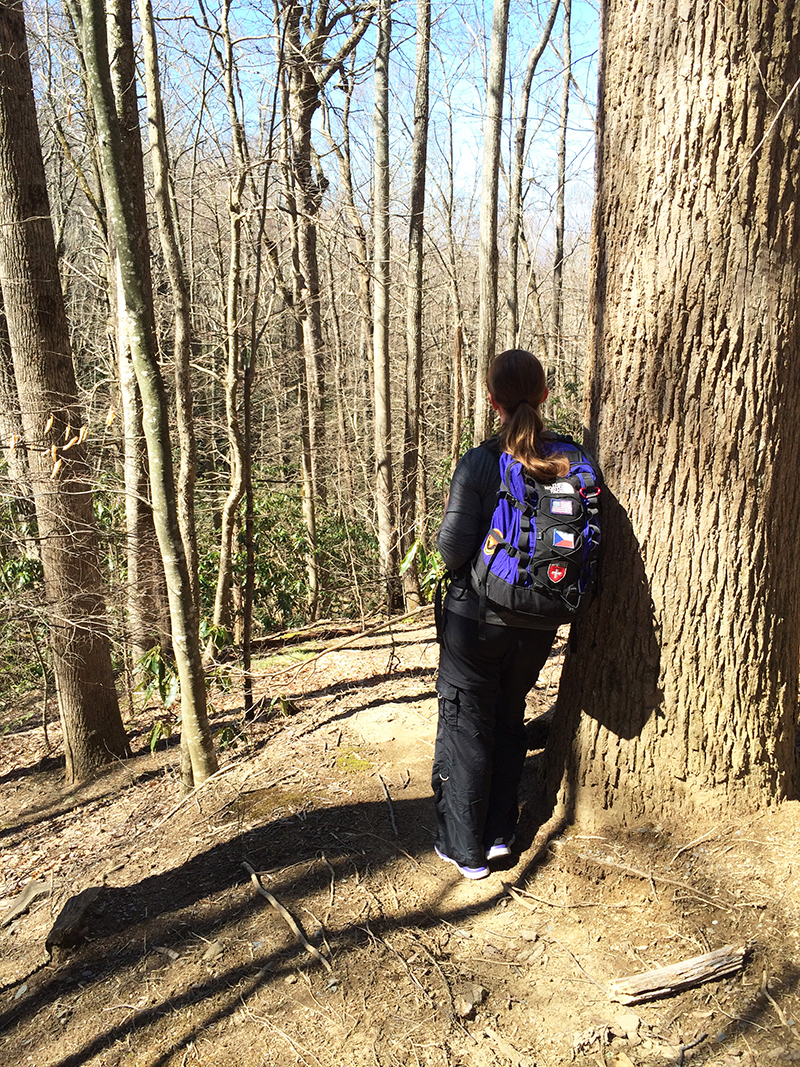
A good backpack that’s comfortable with plenty of volume should be considered based on the type of hiking adventure you’re planning – Photo by Frank Ledwell
Deciding on equipment can be a daunting task, especially when going backpacking. However, the general rule is this: Buy the best equipment you can afford. Equipment failure is the last thing you want to worry about when you’re far from your vehicle or civilization. Any equipment you buy from a discount store or department store will generally not stand up to the rigors and weather extremes of the backcountry. Nothing is worse than having a trip ruined due to being cold and wet because of a poor quality tent or sleeping bag, or being in pain the entire trip because a backpack doesn’t fit correctly. Quality name-brand equipment will be more durable, waterproof, and lighter than off-brand equipment. A local outdoor specialty store or the gear reviews in OutdoorX4 are a great place to start.
WHAT ABOUT FOOTWEAR?
Unless you are hiking in winter through snow and ice, heavy leather boots are pretty much a thing of the past. For day hiking, athletic shoes (running shoes) are just fine. For backpacking, lightweight hiking boots or approach shoes will work perfectly. If you need approach shoes or hiking boots, your local outdoor specialty store will have quality brands and will help you with proper fitment. Do not buy your footwear a week before a hike. Spend about a month or so wearing your new footwear on a daily basis to get your feet used to them and to get your footwear properly broken in.

Vasque Sundowner GTX hiking boots – Photo by Frank Ledwell
WHAT CLOTHES SHOULD I WEAR?
The number one rule for clothing in the backcountry is to avoid cotton. This means avoiding cotton t-shirts, blue jeans, cotton underwear, and cotton socks. While hiking, you’re naturally going to perspire…. sometimes a lot. Cotton absorbs perspiration and continues to stay wet long after a hike has been completed. Wet clothes from perspiration plus cool mountain weather can be a recipe for hypothermia. Hypothermia is a very dangerous condition where the body temperature drops abruptly. Instead of cotton, choose outdoor clothing made from synthetic or wool/synthetic blends.
Synthetic clothing wicks perspiration away, dries quickly, and helps to prevent hypothermia. Wool socks are the best option for your feet. Wool, or a wool blend material, wicks away foot moisture and helps prevent blistering. Finally, quality, waterproof-breathable rainwear is a must to keep you warm and dry while on the trail.
WHAT WILL I EAT ON THE TRAIL?
For day hiking, take high-calorie snacks that you normally enjoy at home. Foods that work great are trail mixes, candy bars, granola bars, cheese or peanut butter crackers, or even a sandwich prepared that morning. These are all foods that you can eat during a break or munch on while on the move. Food for backpacking takes a little more preparation and planning. There are a lot of food options available including freeze-dried backpacking foods or items you can get from your grocery store. Freeze-dried foods are easy, tasty, and convenient but can be expensive if you have to buy a lot of it. For a one or two-night trip, this can be a good option. For longer hikes, grocery store foods (like mac and cheese) are a great alternative. Just remember to remove all the excess packaging to save weight in your pack. Meals can be as simple or as complicated as you desire, but remember that the more complicated the meal, the more time, weight, and stove fuel they will generally need. Most seasoned backpackers use a combination of freeze-dried meals along with grocery store food to provide simple, lightweight, and tasty meals while on the trail.
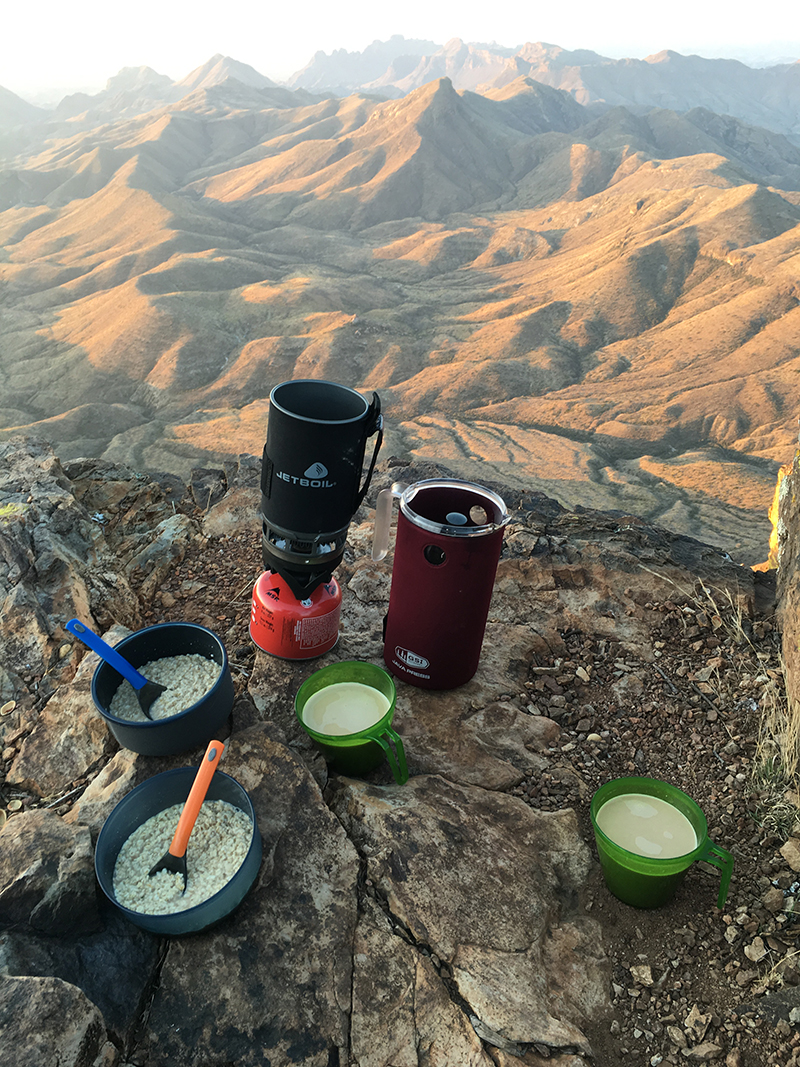
Backpacking along the South Rim of Big Bend National Park – by Frank Ledwell
Water is a day hiking and backpacking necessity, and it is important to stay hydrated. It may be practical to carry all your water on a day hike, but it is almost impossible to carry enough water for a multi-day backpacking trip. Proper trip planning will ensure that there are water sources along your route, but you will still need to filter or purify your water before drinking it. Even the clearest mountain streams can contain water-borne pathogens that can make you extremely ill, so plan accordingly.
WHAT ARE SOME OF THE DANGERS?
Hiking or backpacking can be dangerous if the backcountry is not given the proper respect. Proper planning and preparation can usually minimize the dangers; however, nature can still be unforgiving at times. If possible, hike with a partner. Solo hiking can be fun but having a partner means you have someone with you who can give first aid or go for help in an emergency.

Short hike through Cholla Garden at Joshua Tree National Park – Photo by Frank Ledwell
Weather, exposure to the elements, and hypothermia are probably the biggest dangers in the wilderness. You can avoid bad weather by watching the forecast and rescheduling your trip if inclement weather is forecast. If you can’t avoid bad weather, quality equipment and timing can sometimes keep you out of trouble. In mountain regions, start early and hike during the first part of the day before the afternoon thunderstorms move in. When a storm is approaching, hunker down and wait for it to pass. Minimize lightning danger by avoiding ridges and exposed areas. Good quality rain gear, clothing, and shelter can keep you warm and dry if you have to sit out a storm.
Getting lost can be another concern. As a new hiker, stick to established trails and learn how to read a map/compass. A Global Positioning System (GPS) unit with mapping software is an excellent tool for keeping track of your position but shouldn’t be relied upon exclusively.
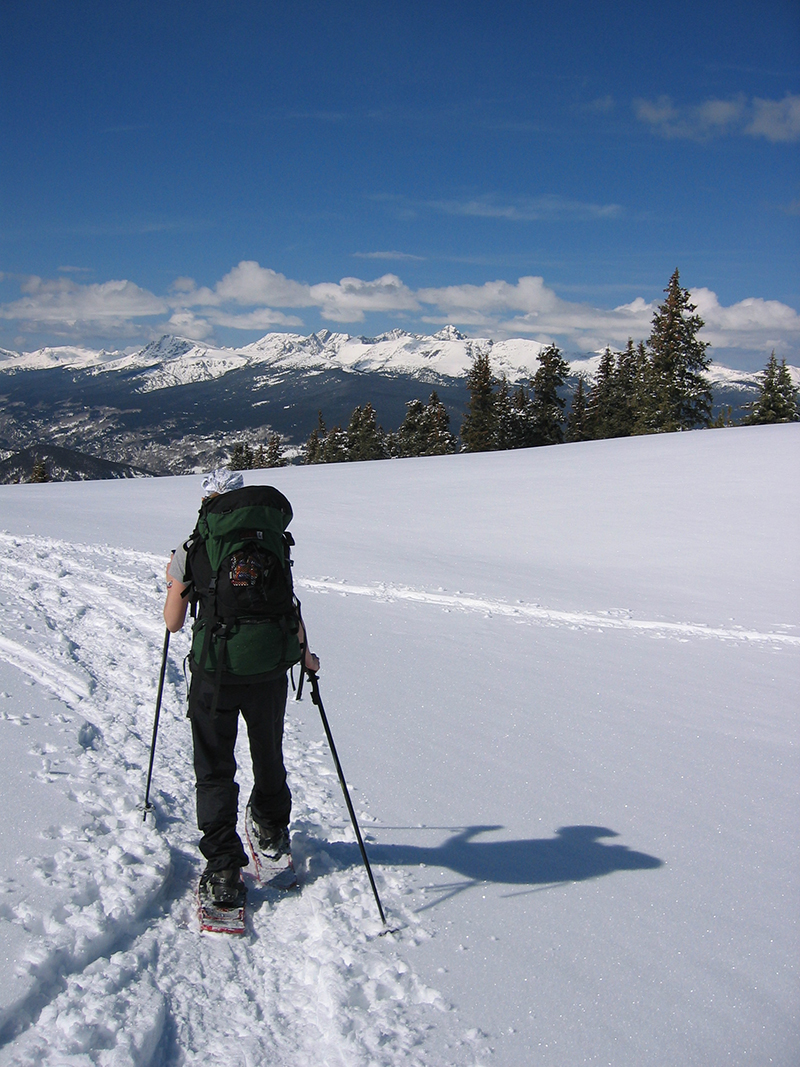
Winter backpacking in the Rockies – Photo by Ray Schindler
Additionally, encounters with dangerous animals are rare but do happen. Keep your distance from animals and maintain a clean camp to avoid attracting bears and other pesky critters.
Despite these things, hiking is a relatively safe endeavor. You can’t control the unexpected, but a little planning and preparation, along with good common sense, can help to ensure that you have a safe, successful, and enjoyable hike. Keep in mind that while you’re on the trail, you should always respect the outdoors and the environment. Practice “Leave-No-Trace” (www.lnt.org) and Tread Lightly! (www.treadlightly.org) techniques to ensure that the environment is protected for future generations. Whether your trip is one mile or 100 miles, hiking is a wonderful way to experience the outdoors well beyond the limits of our 4x4s. There are thousands of miles of trails out there to explore so instead of sitting around and dreaming about a hike, buy a guidebook and map, plan a hike, and go. The road may end but your adventure is just beginning.
* OutdoorX4 Magazine – Promoting responsible 4×4 adventure travel and outdoor recreation


